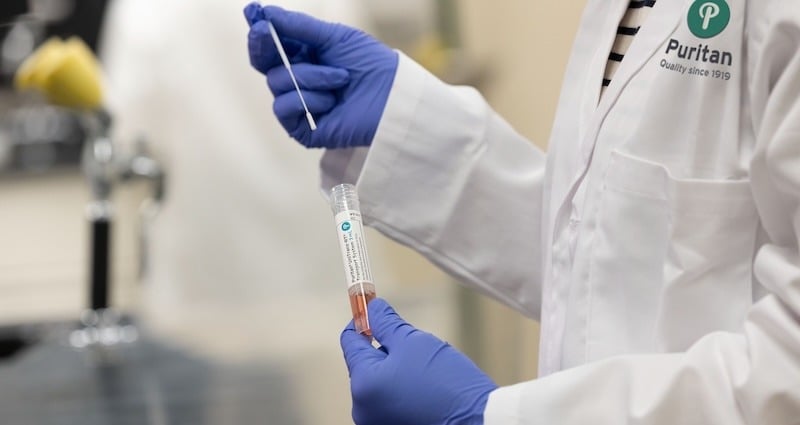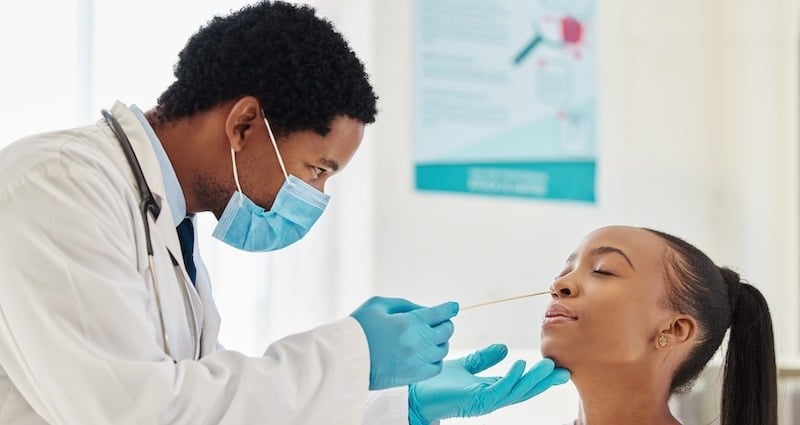
According to a Chronicle of Higher Education survey, more than half of all U.S. colleges and universities plan to hold classes in person this fall. Post-secondary educators have been grappling with many of the same reopening challenges as elementary and secondary educators — and more. The close quarters college students live and learn in makes widespread infection particularly likely unless adequate precautions are taken.
But how should administrators determine if precautions are adequate? Given the unprecedented situation and limited federal guidance, many schools are relying on advice from state agencies and research from their own health experts.
More Testing May Be Better
While the CDC currently recommends “cause testing” on college campuses (meaning only those with symptoms, exposure or increased risk), many university administrators believe widespread COVID-19 testing is necessary for safe reopening and ongoing coronavirus containment.
Some universities are opting to follow CDC guidelines and cause testing, while others believe that more frequent testing of the school population is needed to contain the virus. A patchwork of testing strategies has emerged at institutes of higher education, providing potential opportunities to understand what may work — and what may not — in the months ahead. These learnings could also prove helpful for other high-contact communities like elementary schools and workplaces.
Universal Entry Testing Is Trending
Many schools are testing students on arrival or asking them to bring recent test results with them. Some are doing both. The CDC doesn’t recommend college entry testing in general, because it can miss early stages of infections and only provides COVID-19 status for one specific point in time. However, there are many reasons administrators are considering it from clearing students from high-infection areas to their desire to ease parental concerns about safety.
Widespread Asymptomatic Testing In Place on Some Campuses
In addition to entry testing, many colleges are considering testing all students at regular intervals during the semester. Others are choosing to randomly test students in dorms and classrooms to gauge campus infection rates. Given that COVID-19 testing is uncharted territory for everyone including universities, who to test and how frequently to do so are top questions. Some schools are taking advantage of their research capabilities to develop optimal testing strategies.
A research team at Cornell University determined that students would need to be tested every week to contain outbreaks. A joint study at Yale and Harvard Medical School suggests that students should be tested every two or three days. Cadence of testing is also influenced by the level of COVID-19 outbreaks in the area and whether students frequently engage with the community. For example, students on an isolated rural campus in a low-outbreak area are likely to be less risk than those on an urban campus in a high-outbreak area where students live within the community. In fact, the CDC suggests that schools consider widespread asymptomatic testing when there is moderate to substantial risk of community transmission.
Key Considerations for Testing
One obstacle preventing widespread testing is resources, which includes testing supplies, laboratory capacity and adequate personnel to conduct testing. Some universities, like Boston University and University of California, Berkeley have created their own pop-up labs onsite. Others are turning to local hospital systems or commercial labs. More than 30 colleges in New England plan to have samples tested through a research center affiliated with Harvard and MIT.
Cost is another consideration. While insurance typically covers COVID-19 tests when patients are symptomatic, routine testing is less likely to be covered, which would leave colleges footing the bill. Each diagnostic test runs about $100 (though it could be less if more schools utilize in-house testing). Even if administrators believe more testing is better, it may come down to what they can afford versus what will be most effective.
A recent research model by Massachusetts General Hospital provides some promising news about the cost of widespread testing. If done frequently (optimally every three days), much cheaper testing options could be pursued. Schools may be able to use lower-cost, less-reliable methods with false negatives as high as 33%, because a student is unlikely to have multiple false negatives in a row.
Another way to economize is using a pooled testing process which Syracuse University is deploying this fall, screens about 25 students for COVID-19 with one test. Students individually take saliva samples and multiple samples are combined into one pool that’s tested. A negative result presumes all students are virus-free. A positive test leads to individual tests for all students in the group.
It’s unclear what the path forward is for coronavirus testing on college campuses. However, with a variety of approaches are being tried simultaneously, there will be a lot of new information in the coming months that could help us determine the best path forward in education and other high-contact environments.
Interested in learning more about coronavirus testing? Check out our COVID-19 Portal with the latest news and data from Puritan Medical Products, CDC and John Hopkins University.



